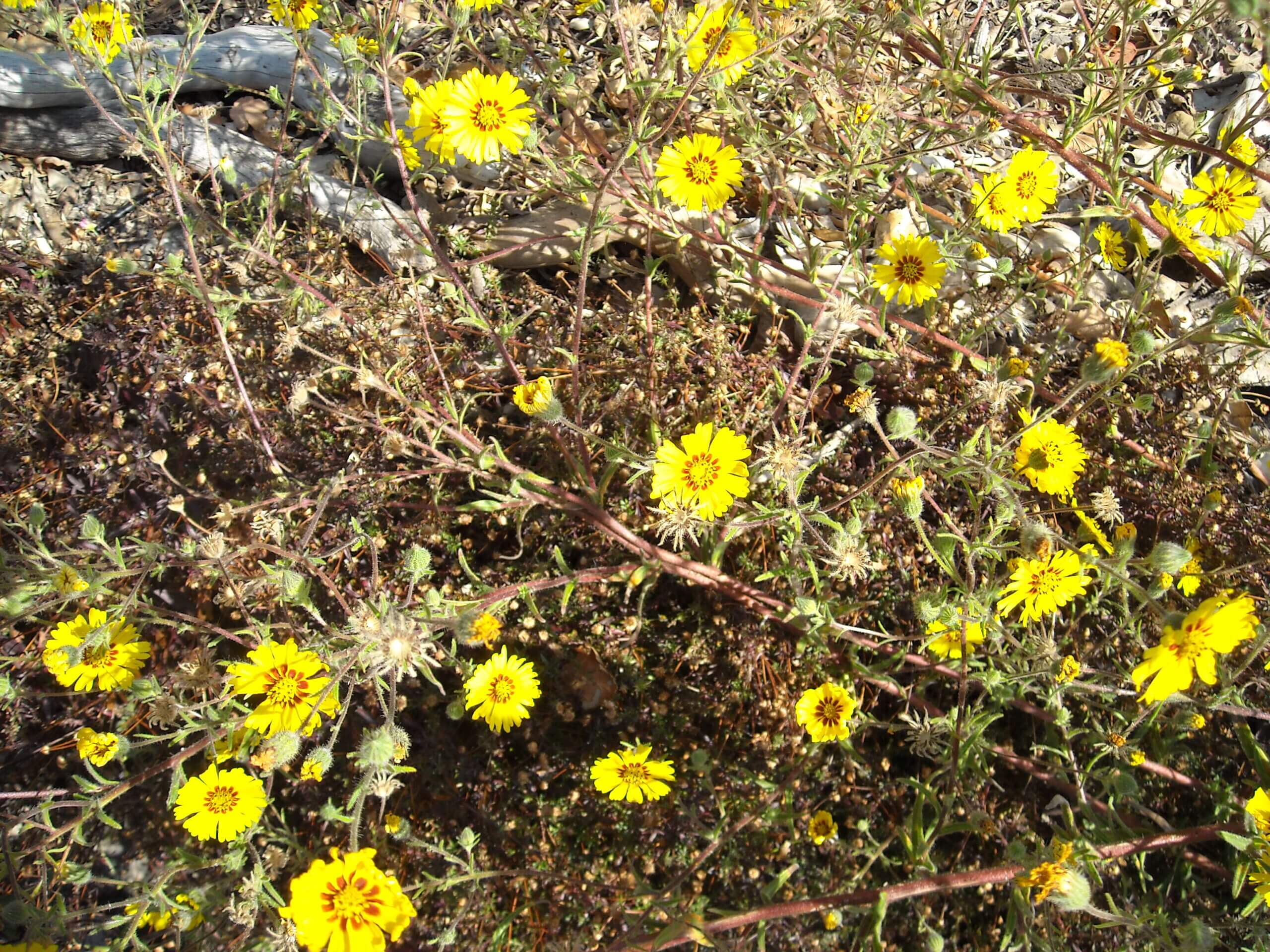The term Ecology is a relatively new field of study in the world of Biology; it was coined in 1866 by the German scientist, Ernst Haeckel (1834 – 1919). There are now two major subdivisions; animal ecology or plant ecology; and as many as twenty-one different specialty areas of study. One of the broadest specialty areas is Bioecology, when plants and animals are given equal emphasis; Autecology is the study of a single species of organism; and Synecology is the study of ecological inter-relationships among communities of organisms. I quickly realized that this is exactly what inspires me! I’m a Synecologist! I think about inter-relationships when I’m out walking in the wilds, and when I’m working in my garden. I’ll use one of my favorite native plants, Elegant Madia (Madia elegans) as an example.
Elegant Madia, to my mind, and as its name implies, is indeed characterized by a dignified richness and grace; richness in all that this annual plant provides for other organisms; and grace in the form of beautiful flowers and a fragrance that defines late summer in this part of California. Madia is an annual native wildflower in the ‘Tarweed Tribe’ of the Aster family, (Asteraceae, or Compositae) that colonizes areas and reseeds prolifically; so though I collect seed each year, I also dig up lots of seedlings early in spring, either to move them to a more suitable location, to share them with gardening friends, or to grow them on in four inch pots for sale.
When seedlings start to put on some growth, usually as early as February, the deer start nibbling at the leaves which form as rosettes close to the ground. By late March or early April, the deer have lost interest, and the plants that were nibbled have responded by adding a lot more stems that extend from that central rosette, and start to put on some height. Depending on the soil, the available moisture, and the ‘nibbling’ the plants will vary greatly in size; from slender little things just a few inches high, to well-branched plants, some more than six feet tall!
They start to bloom sometime around June or July, again depending on conditions; flowers are open in the mornings, close up at mid-day, and open again in the late afternoon. When the plants are in full bloom there’s a wonderfully musty-honeyed fragrance that pervades the air all around; this ‘tarweed perfume’ defines, for me, the warmth and beauty of late summer days in California.
In the larger specimens flowering is profuse, and the plants become a hive of activity. All sorts of native bees, bumblebees, and honeybees visit for pollen; in August I noticed lots of long-horned bees collecting pollen from the central disc of the flower. Notice how the ray flowers have that darker color close to the central disc? That’s a ‘nectar guide’which attracts all sorts and sizes of syrphid flies to come and take a sip; they always seem to approach the flowers along the petals, and don’t seem too interested in the pollen. Smaller butterflies, like the skippers, also come to the flowers for nectar; songbirds sometimes nibble at the ray flowers, and I also see a small caterpillar, the larvae of a moth, eating the flowers.
When I first started collecting the seeds of Madia, I noticed that only the ray flowers are fertile; the seeds form in a nice pattern around spent disc flowers, which just lift out as a neat little cap of dried out flowers. Madia seeds are loved by Goldfinches; and apparently also by the native peoples of California, who collected all sorts of wildflower seeds for a ‘pinole’, but considered the taste of Madia seed to be the best.
When most of the seeds have been taken; either by the finches or by me; I start to cut the plants back. I sort the plant parts as I’m cutting; the tops, with mostly spent flowers, become ‘wildflower hay’ which I spread out in places where I want Madia to grow the following year. Towhees, Juncos, and other sparrows, all of which are ground-feeders, will do their ‘double-scratch’ and pick out still more seed; but much of it will get scratched into the soil and germinate when conditions are most favorable. The rest of the plant parts either go to one of my compost piles or a brush pile; where they are still providing for a host of creatures!


